Calcite Socks – free 4ply cable pattern and tutorial
It’s a long Bank Holiday weekend here in the UK and what better time to cast on a new pair of socks? Even better – a 4ply cable pair of socks that you can knit with a free pattern! 🙂
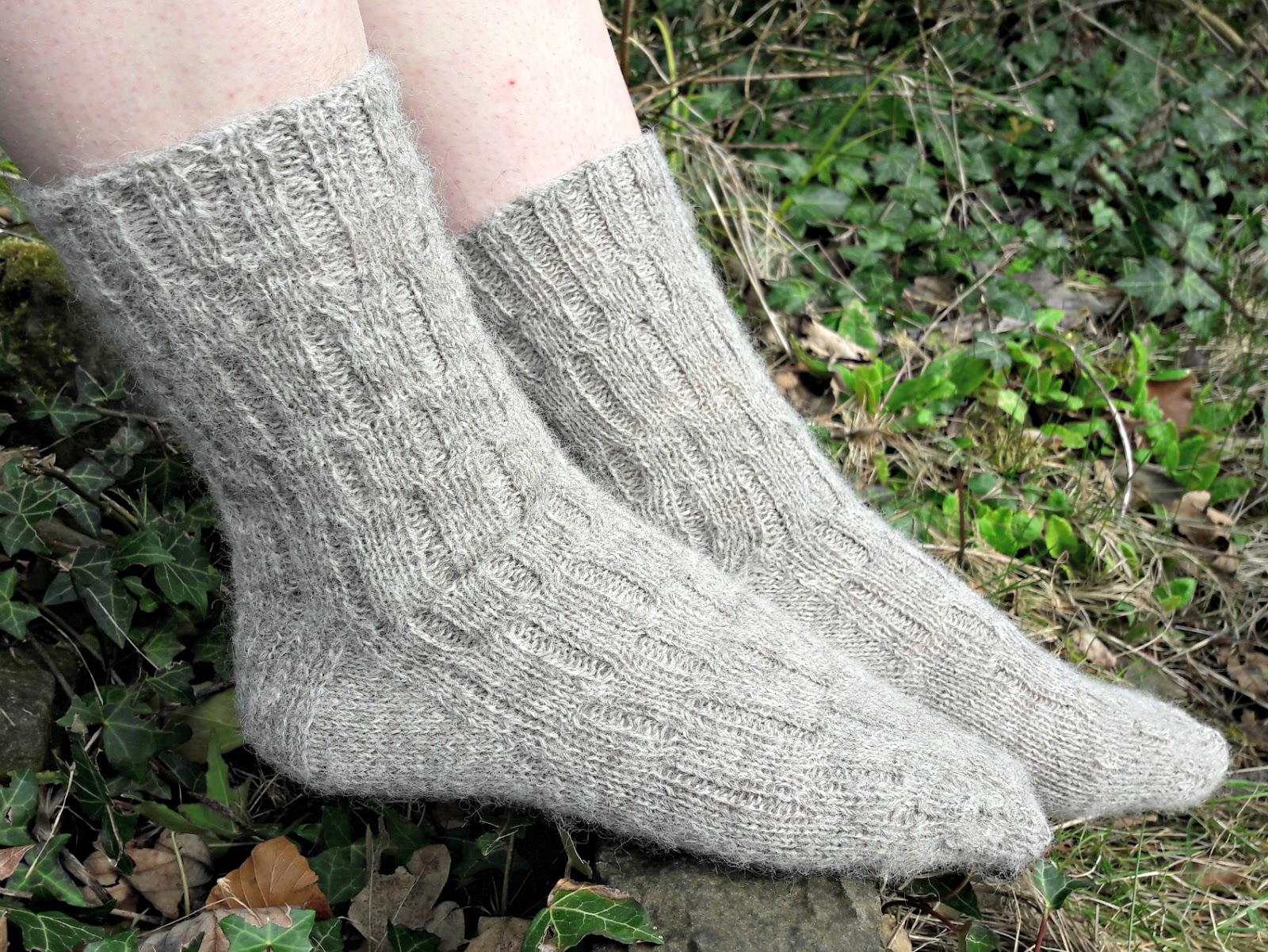
This pair was designed for the new leaf yarns Alpaca/Bluefaced Leicester/Teeswater 4ply no-nylon blend that I reviewed in my last post – I didn’t want to knit plain socks and was feeling the need for some simple cables. Oh, I do love a cable!
They’re called Calcite, named after the mineral that is found abundantly all over the world. Although colourless when pure, Calcite can be found in many hues and it also possesses the unusual feature of always breaking into the same shape when the stone is cut. These rose-grey socks are certainly not colourless and when you look closely, are subtle shades of the undyed fleece of Nicky the alpaca and the sheep which were blended into this yarn. The cable shapes aren’t quite the same rhomboid shape that is a feature of cut Calcite, but they are regular in shape and surely a bit of artistic license is allowed? 🙂
If you missed the review post on the new leaf yarns alpaca yarn that I used for these socks, you can find it here. I did like this yarn very much, although there’s no reason at all why you can’t knit this pattern in any yarn that you like. A word of caution here, though (and I’ve reminded you again later!) – because alpaca yarn is very soft, it’s often stretchier than other yarns and I can’t tell you for sure whether the fact that I was able to knit my regular size in this cable pattern is down to the yarn or the cable pattern itself, so I’d recommend that you work a sample in your chosen yarn first to see how it knits up for you. My experience was that the cables didn’t pull in at the rounds where you work them, but obviously with a different yarn you might have a difference experience.
I haven’t written an in-depth tutorial for this pattern as it uses skills that I’ve written about elsewhere, but I’ve still called it a tutorial as you can find the information that you might need through these links:
If you need help with cables, you can find that in the Easy Cable Socks tutorial.
If you need help with the ribbed heel flap, you can find that in the Patchwork Socks tutorial.
If you want to reinforce the soles, heels and toes of your socks, you can find help with that in this reinforcing socks tutorial.
If you’re brand new to socks and haven’t knitted any before and want to give this pattern a go, use the Sockalong tutorials alongside the pattern for extra guidance – there’s no reason at all why these can’t be your first pair of socks!
**Please note that this pattern has not been tech edited or test knitted so although I’ve checked it very carefully, it’s possible that you may find some mistakes. If you do, please let me know so that I can fix them! 😀**
Right then, shall we jump in?
Calcite Socks
you can download a copy of the PDF pattern here
These cable socks are constructed as top down socks with a heel flap and gusset. The heel is knitted in Ribbed Heel Stitch which creates a durable, cushioned heel and is a more defined rib variation of the traditional Heel Stitch. In this version, the toes are also knitted in Ribbed Heel Stitch but this is optional. Four sizes are given for this sock, and the length of the sock is easily adjusted for any foot.
Size
To fit ball of foot circumference 8 [8.5:9:9.5]inches; 20 [22:23:24] centimetres. It is usual with cable stitches to knit to the next size up to your usual size to accommodate for the fabric pulling in with the cables. I found that I didn’t need to do that with this pattern although you might find otherwise if you use a different yarn. A test swatch is recommended!
Gauge
30 stitches to 4 inches (10 cm) in stocking stitch (worked in the round) on 2.5mm needles
Materials
2.5mm needles – short circular needle, DPNs (double pointed needles) or 80 cm circular for magic loop
1 x 100g skein of new leaf yarns 4ply Alpaca/Bluefaced Leicester/Teesdale yarn (400m) (2021 update – new leaf yarns no longer seem to be in business)
1 set DPNs size 3.0mm (optional)
1 set DPNs size 2.5mm (not required for magic loop)
stitch holder (optional)
stitch markers
wool needle
Abbreviations
K Knit
K2tog Knit two stitches together
P Purl
Sl 1 Slip 1 stitch purlwise
SSK Slip the first stitch on the left hand needle knitwise onto the right hand needle, slip the second stitch on the left hand needle purlwise onto the right hand needle, slip both stitches back onto the left hand needle and knit together through back loop
T3L Slip the next two stitches onto a cable needle and hold at the front of your work, purl the next stitch on the LH needle then knit the two stitches from the cable needle
T3R Slip the next stitch onto a cable needle and hold at the back of your work, knit the next two stitches on the LH needle then purl the stitch on the cable needle
St(s) Stitches
( ) Repeat instructions within brackets
Note: It is often easier to cast on using DPNs before changing to the short circular needle. If you want to use magic loop you will be able to cast on with the larger circular needle if you prefer to do so, but remember not to pull your cast on stitches too tight. If you use DPNs, you might find it easiest to cast on and work 2 rows before dividing the stitches across the needles.
Pattern
Cast on 60 (64:68:72) sts using 3.0mm double pointed needles.
Row 1: (K2, P2) repeat to end, turn.
Row 2: (K2, P2) repeat to end, turn.
Change to a 2.5mm short circular needle, magic loop or divide the stitches across DPNs and join into a circle, place marker. You will sew up the small gap where you knitted the first two rows later.
Continue in K2, P2 rib for 14 more rounds or until desired length of rib.
Leg
Using either the chart or the written pattern for your size, work the pattern for each round until the leg measures 6 [7] inches; 15 [17] cm or desired length from cast on edge. Remember to take note of which round of the pattern you finish on as you will need this later.
60 stitches (30 sts twice)
Rounds 1-10: K2, (P2, K4) 4 times, P2, K2. 30 sts
Round 11: (T3L, T3R) 5 times.
Rounds 12-26: P1, (K4, P2) 4 times, K4, P1.
Round 27: (T3R, T3L) 5 times.
64 stitches (32 sts twice)
Rounds 1-10: K3, (P2, K4) 4 times, P2, K3. 32 sts
Round 11: K1, (T3L, T3R) 5 times, K1.
Rounds 12-26: K1, p, (K4, P2) 4 times, K4, P1, K1.
Round 27: K1, (T3R, T3L) 5 times, K1.
68 stitches (34 sts twice)
Rounds 1-10: P1, K3, (P2, K4) 4 times, P2, K3, P1. 34 sts
Round 11: K2, (T3L, T3R) 5 times, K2.
Rounds 12-26: K2, p, (K4, P2) 4 times, K4, P1, K2.
Round 27: K2, (T3R, T3L) 5 times, K2.
72 stitches (36 sts twice)
Rounds 1-10: P1, (K4, P2) 5 times, K4, P1. 36 sts
Round 11: (T3R, T3L) 6 times.
Rounds 12-26: K2, (P2, K4) 5 times, P2, K2.
Round 27: (T3L, T3R) 6 times.
Heel Flap
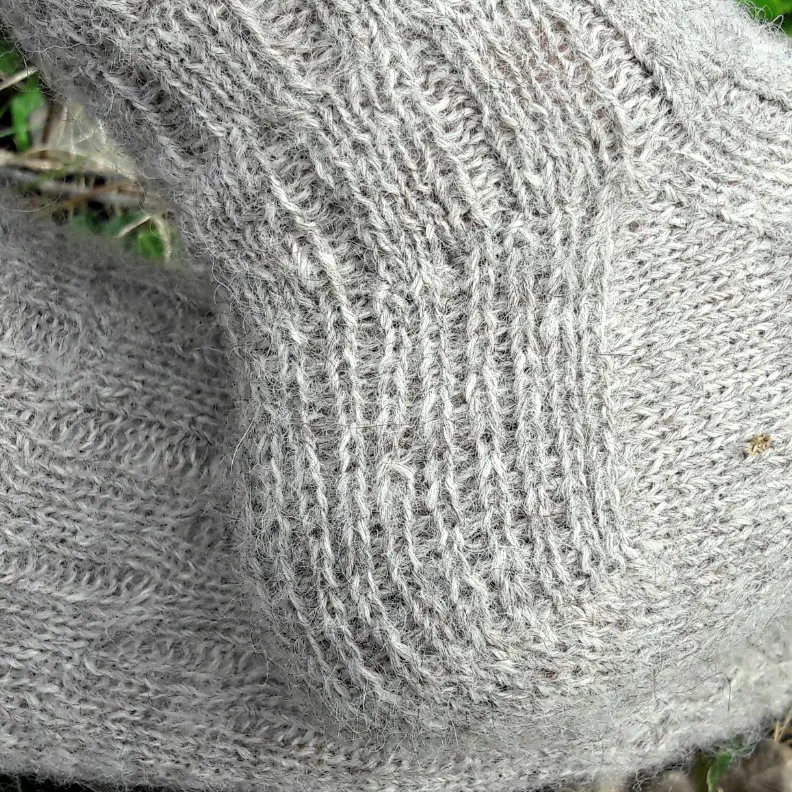
Change to 2.5mm DPNs if you are using a short circular needle. There is no need to use DPNs if you are using magic loop. You may prefer to place the spare stitches from the top of the foot onto a stitch holder if you are using a short circular or DPNs whilst you work the heel.
Row 1: K2, (Slip 1, P1) until you have 28 [30:32:34] stitches on your needle, Slip 1, K1, turn. 30 (32: 34:36) sts
Row 2: Slip 1, (P1, K1) to last 3 stitches, P3, turn.
Row 3: Slip 1, K1, (Slip 1, P1) to last two stitches, Slip 1, K1, turn.
Repeat rows 2 and 3 until heel measures 2 [2:2.5:3] inches; 5[5:6.5:7.5] cm long, finishing on row 3. If you want to make the heel flap longer, continuing knitting rows 2 and 3 until you reach the desired length, but remember that you will need to pick up more stitches to create the gusset.
Turn heel
Row 1: Slip 1, P16 [17:18:19], P2tog, P1, turn.
Row 2: Slip 1, K5, SSK, K1, turn.
Row 3: Slip 1, P6, P2tog, P1, turn.
Row 4: Slip 1, K7, SSK, K1, turn.
Continue in this way, adding one stitch between slip stitch and SSK or P2tog on each row (ie, Row 5: Slip 1, P8, P2tog, P1; Row 6: Slip 1, K9, SSK, K1) until all of the heel stitches are used. Depending on how many stitches are in your heel flap, you may find that the K1 and P1 stitches are not required at the end of the last two rows.
Knit across heel stitches if required to bring you to the left hand side of the heel flap (with the outside of the flap facing you) ready to pick up and knit 1 stitch for every 2 rows knitted. Remember that if you made the heel flap bigger, you will need to pick up more stitches. Once you have picked up the stitches, place marker. Knit across the top of the foot stitches in pattern (continuing from the row after the one you finished on with your leg), place marker, then pick up and knit 1 stitch for every 2 rows of heel flap knitted up the other side of the heel. Knit across the top of the heel and then shape gusset as below.
Note: If you are using DPNs and/or have placed your stitches on a stitch holder, you can arrange the needles as follows: Needle 1 for stitches across heel, Needle 2 for picked-up stitches down side of foot, Needle 3 for stitches across top of foot (knit stitches off stitch holder if required), Needle 4 for picked-up stitches on other side of foot. You may find that stitch markers are not required at first.
Shape gusset
Round 1: K to 3 sts before the marker, K2tog, K1, slip marker, knit in pattern to next marker, slip marker, K1, SSK, K to marker.
Round 2: Slip marker, knit in pattern to next marker, slip marker, knit to 3 sts before marker.
Round 3: K2tog, K1, slip marker, knit in pattern to next marker, slip marker, K1, SSK, K to marker.
Repeat rounds 2 and 3 to shape the gusset. Continue in this way, decreasing by two stitches at the gusset on every other round until there are 60 [64:68:72] stitches on the needle.
Once you have reached the required number of stitches, continue to knit each round until you reach 2 inches (5 cm) before the desired length ready to start the toes. Don’t be afraid to try your sock on before decreasing for the toes!
Toes
Note: At some point whilst decreasing for the toes, if you are using a short circular needle you may need to change back to DPNs or use the magic loop method as the number of stitches becomes too small for the circular. It’s up to you when you choose to do that, and how you distribute the stitches across the needles; just keep following the pattern as set overleaf.
I chose to use the Ribbed Heel Stitch across the toes to reinforce them but the toes can be knitted plain if preferred. If you want to use the Ribbed Heel Stitch, knit your decreases first then start with a slipped stitch as for the heel flap and work along the foot until you reach the second set of decreases. You will find that the stitches alternate from slipped to purled as you decrease more stitches, but it will be easy to see where you are up to based on the previous rounds.
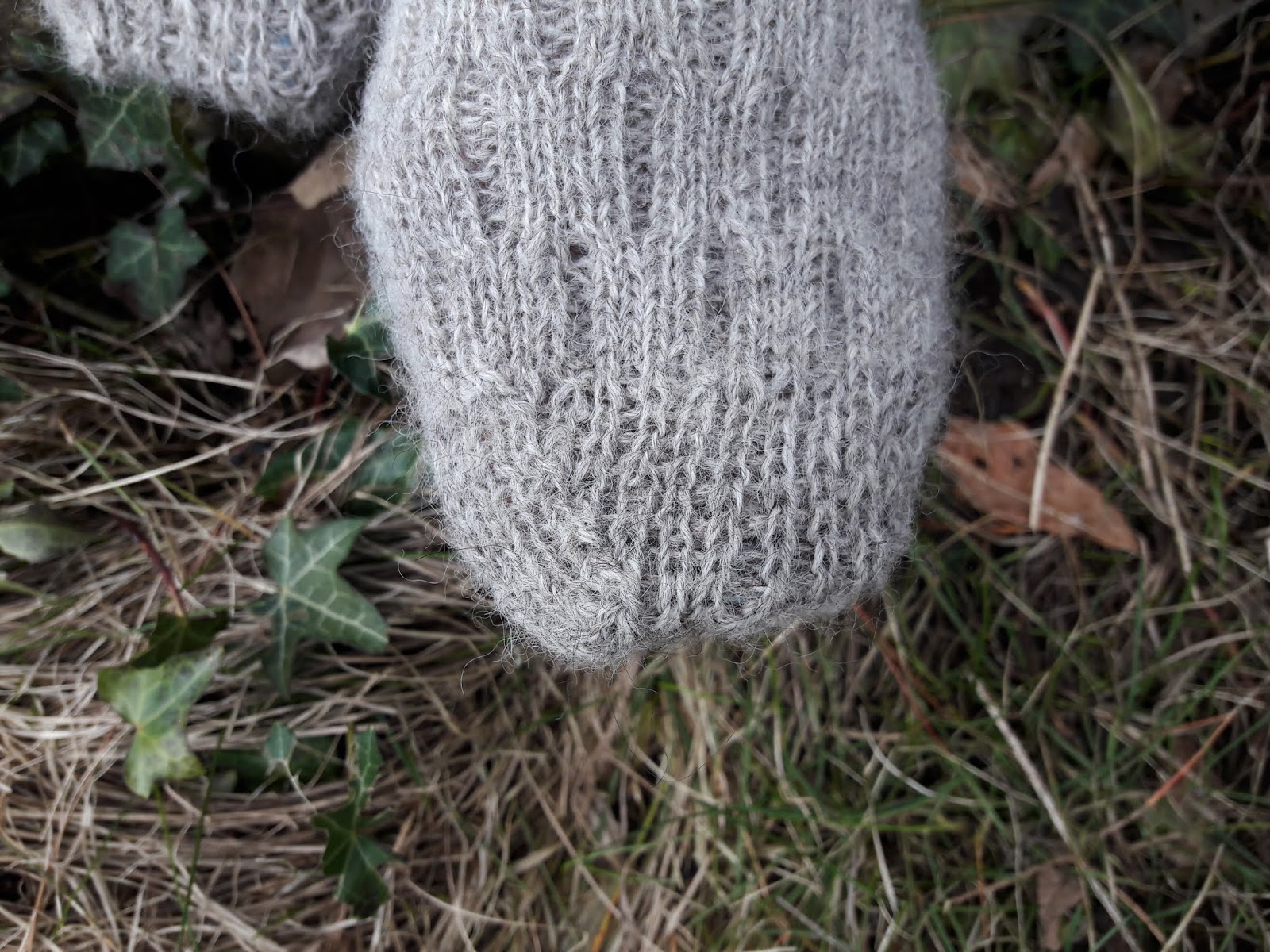
Create the toes as follows:
Round 1: K1, SSK, K24 [26:28:30] sts in Ribbed Heel Stitch (or plain knit if desired), K2tog, K1, place marker, K1, SSK, K24 [26:28:30] sts in Ribbed Heel Stitch (or plain knit if desired), K2tog, K1. 56 (60:64:68) sts
Round 2: Work one round, knitting the knit stitches and purling the purl stitches, slipping markers as you come to them (for plain toes knit all stitches).
Round 3: K1, SSK, K to 3 sts before marker in in Ribbed Heel Stitch (or plain knit if desired), K2tog, K1, slip marker, K1, SSK, K to 3 sts before marker in Ribbed Heel Stitch (or plain knit if desired), K2tog, K1. 52 (56:60:64) sts
Repeat rounds 2 and 3 until you have 28 [28:32:32] sts left and divide these between two needles so that front and back of socks match.
Graft toes using Kitchener stitch, weave in all ends and sew up the small gap at the cuff where you cast on.
Charts
60 stitches
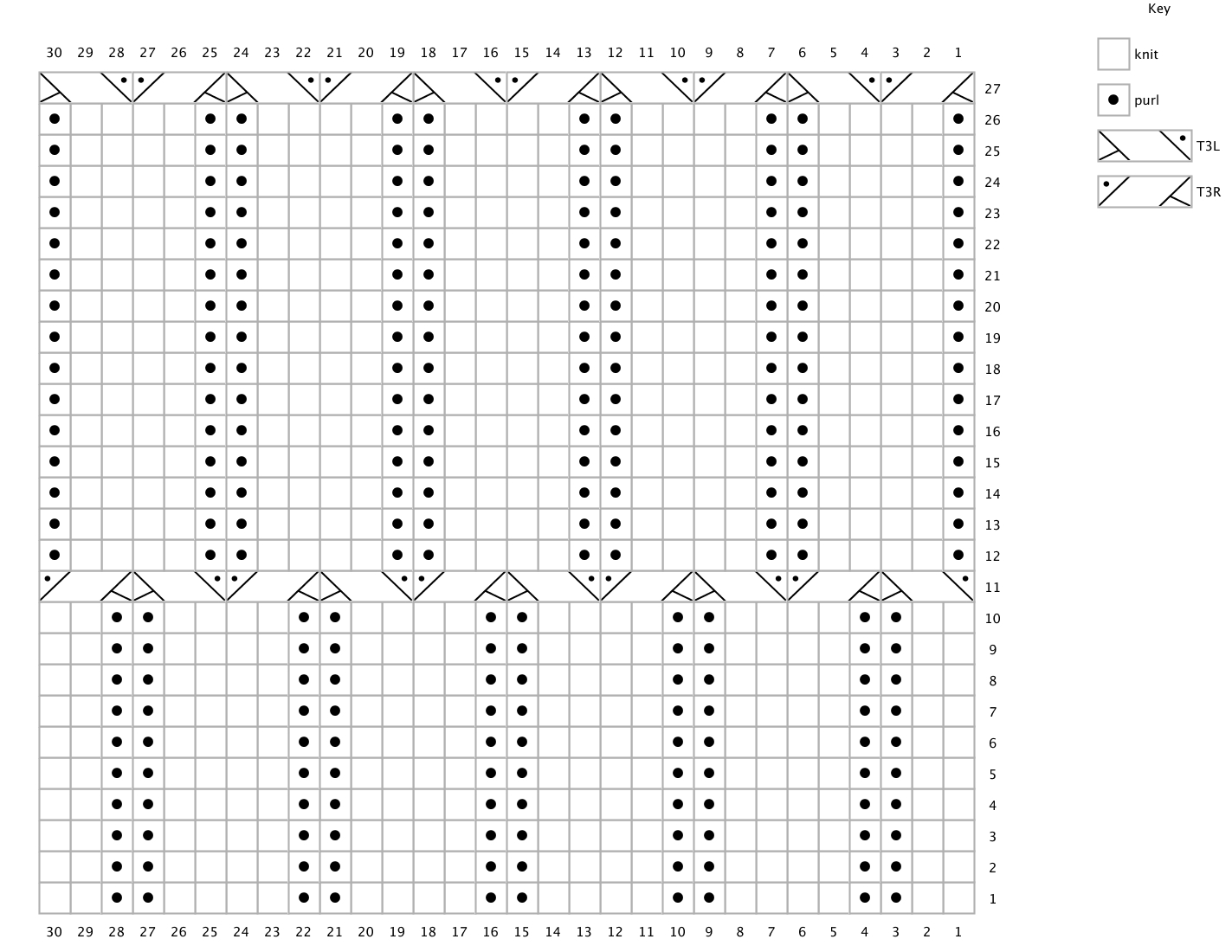
64 stitches
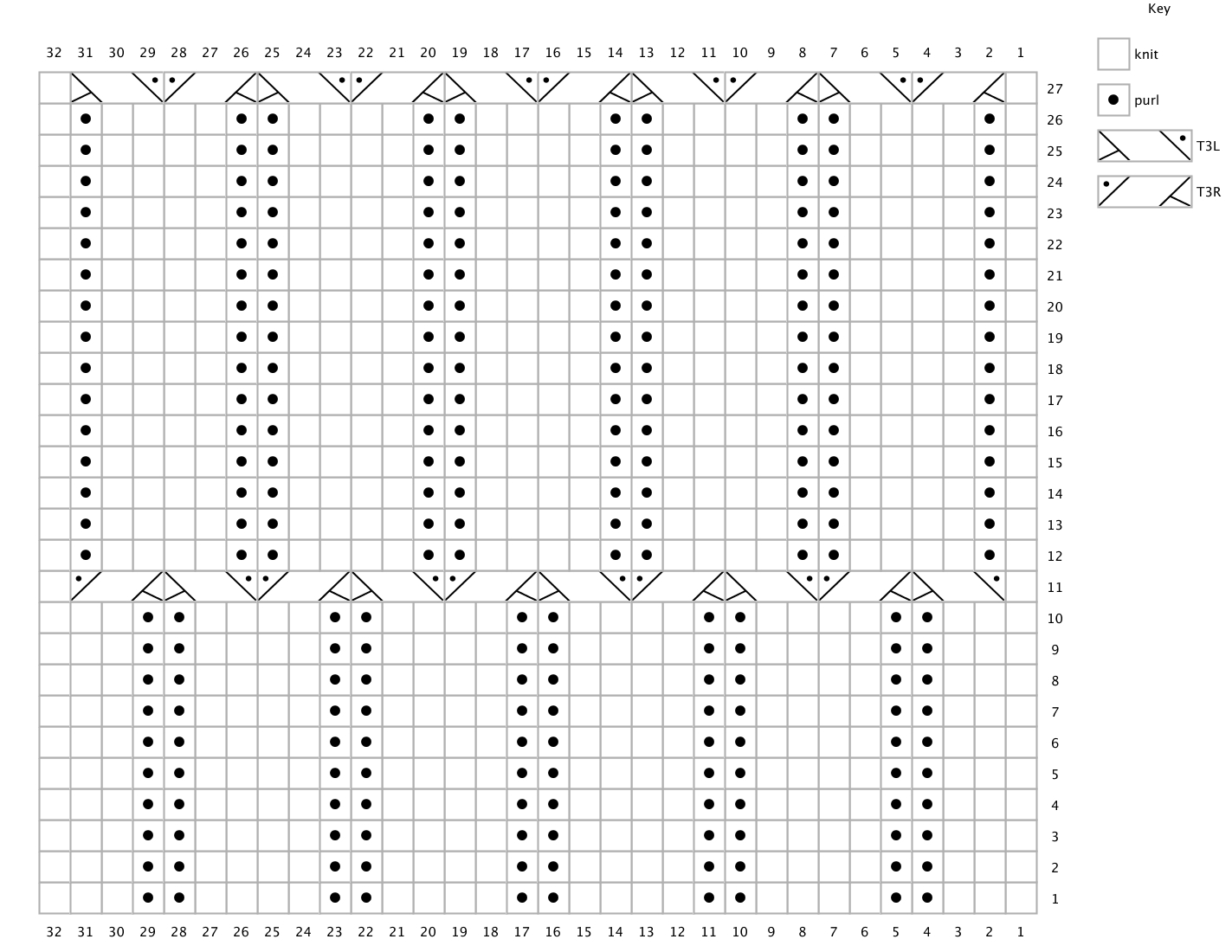
68 stitches
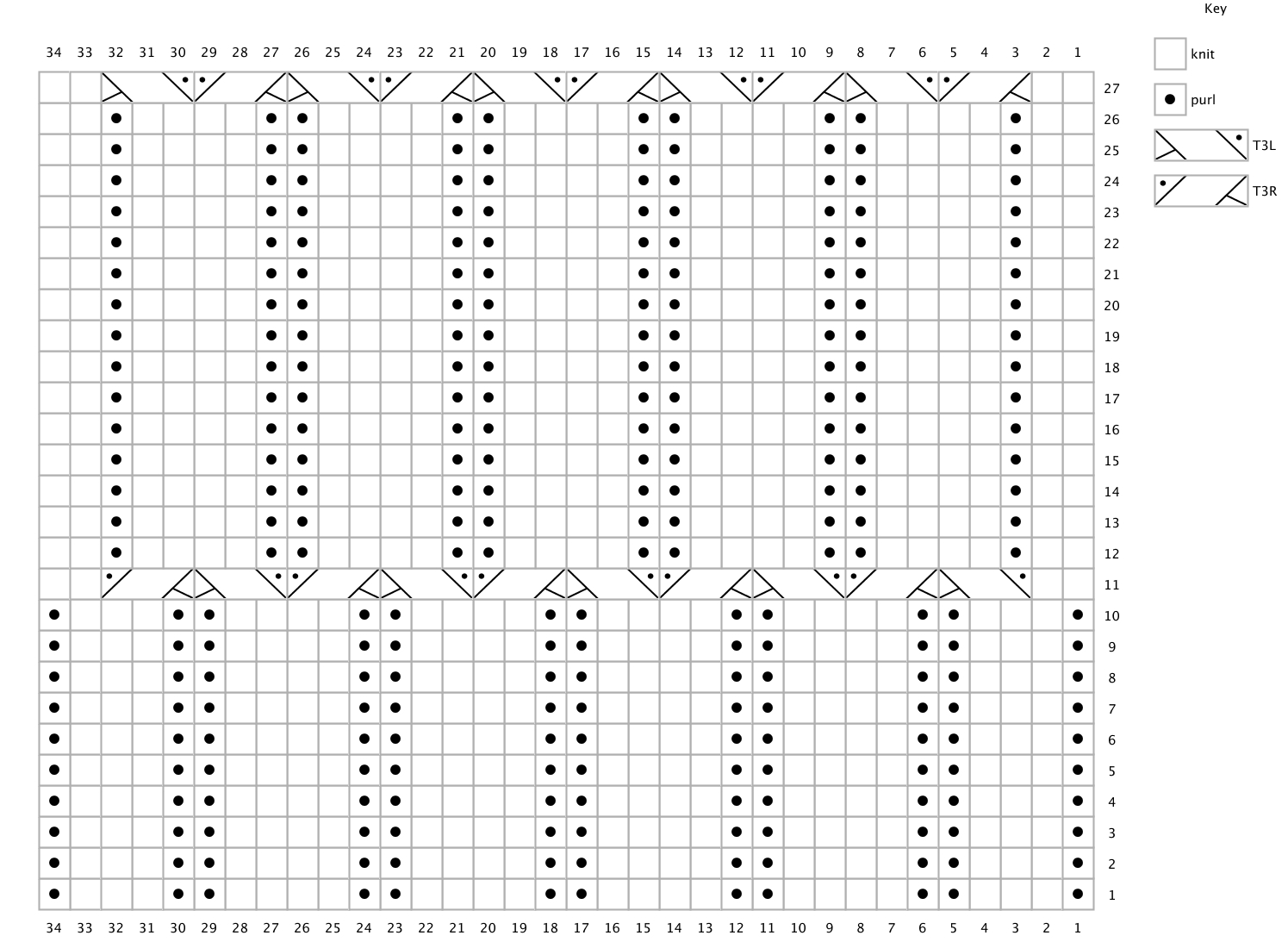
72 stitches

Don’t forget to link your socks on Ravelry so that others can admire them, and if you would like to share them on other social media platforms, there’s a hashtag of #winwickmumsocks. I’m really looking forward to seeing how your Calcite Socks turn out!

This pattern and tutorial is free on this blog and will always remain so, but if you have enjoyed using it and would like to buy me a brew, it will be much appreciated! You can find the donation button on the sidebar on the left hand side. Thank you! xx
This pattern copyright © 2019 Winwick Mum All rights reserved.
Not to be included in any collection or used for profit without written consent of Winwick Mum.
This pattern is based on my Basic 4ply Socks pattern, which means that you can find photo and video help in the Winwick Mum Sockalong tutorials. You can find out more here:
If you can already knit socks but would like to stay in touch, click the link below to join the Winwick Mum mailing list to hear about the latest blog posts, pattern updates, tutorials and more … but no spam, I promise!




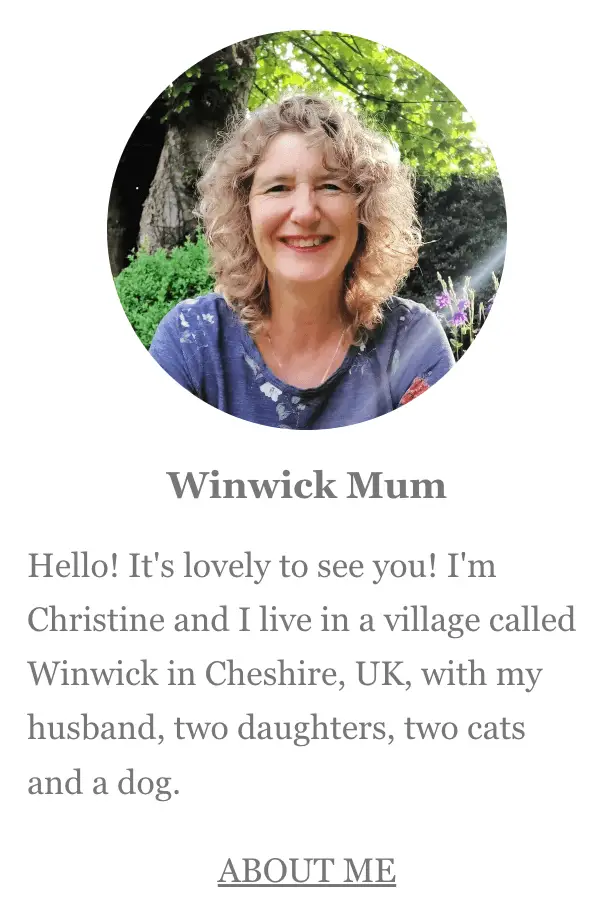

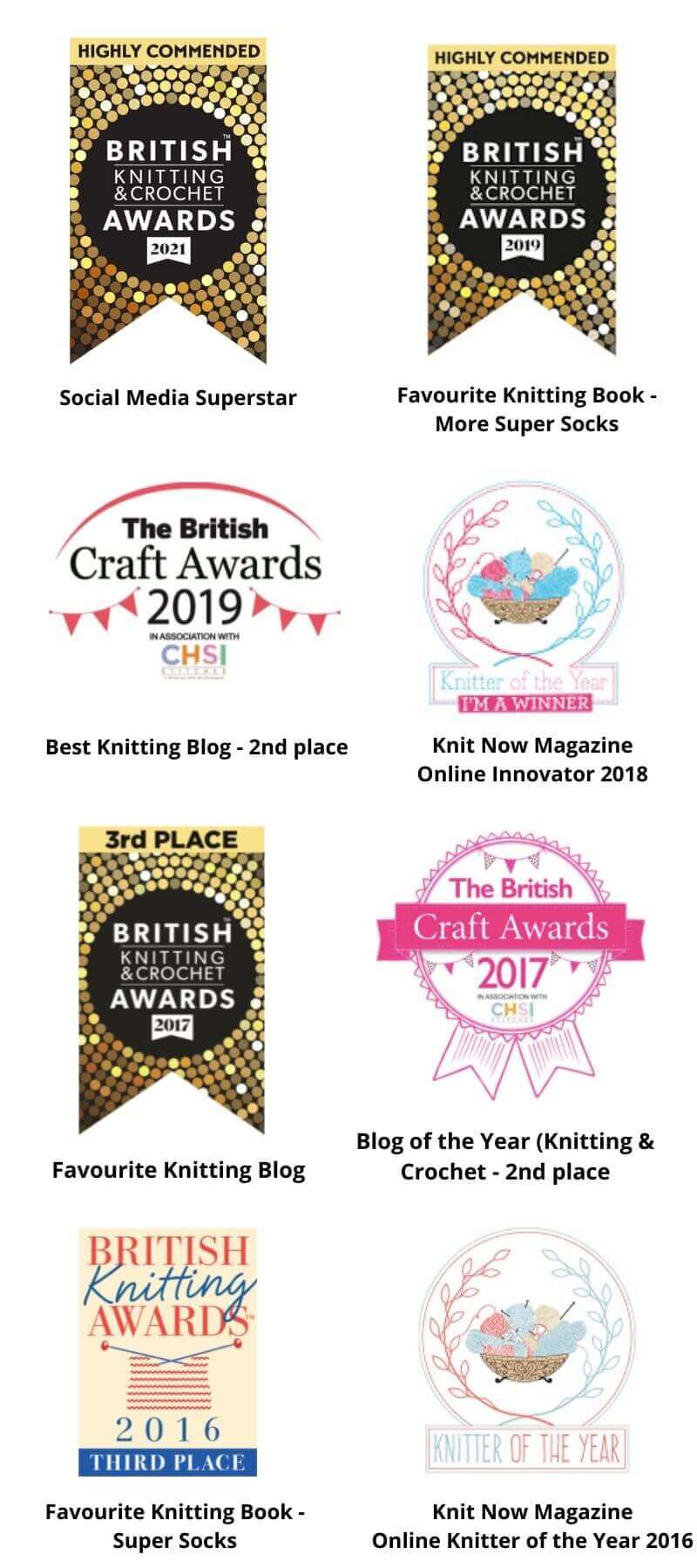

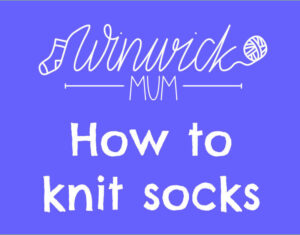


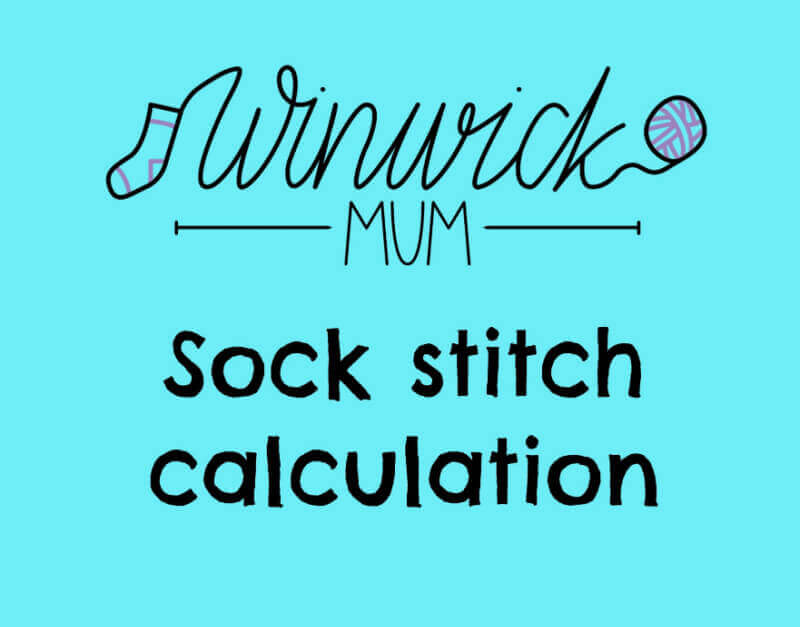
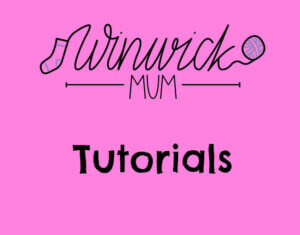




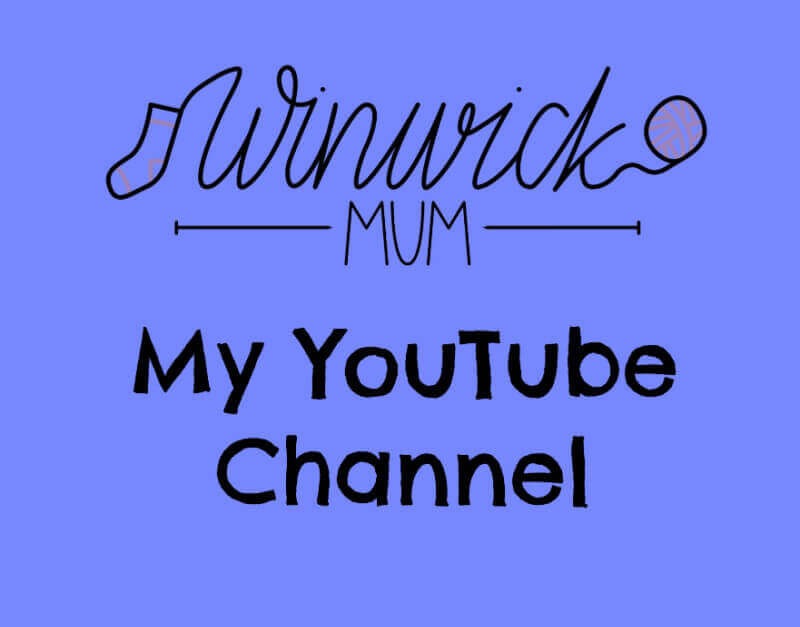
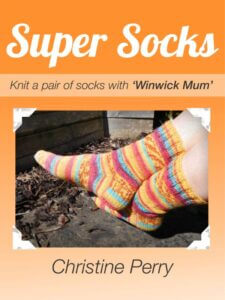
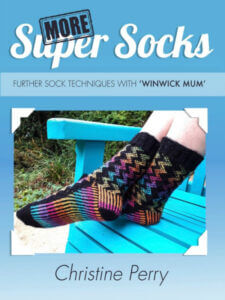


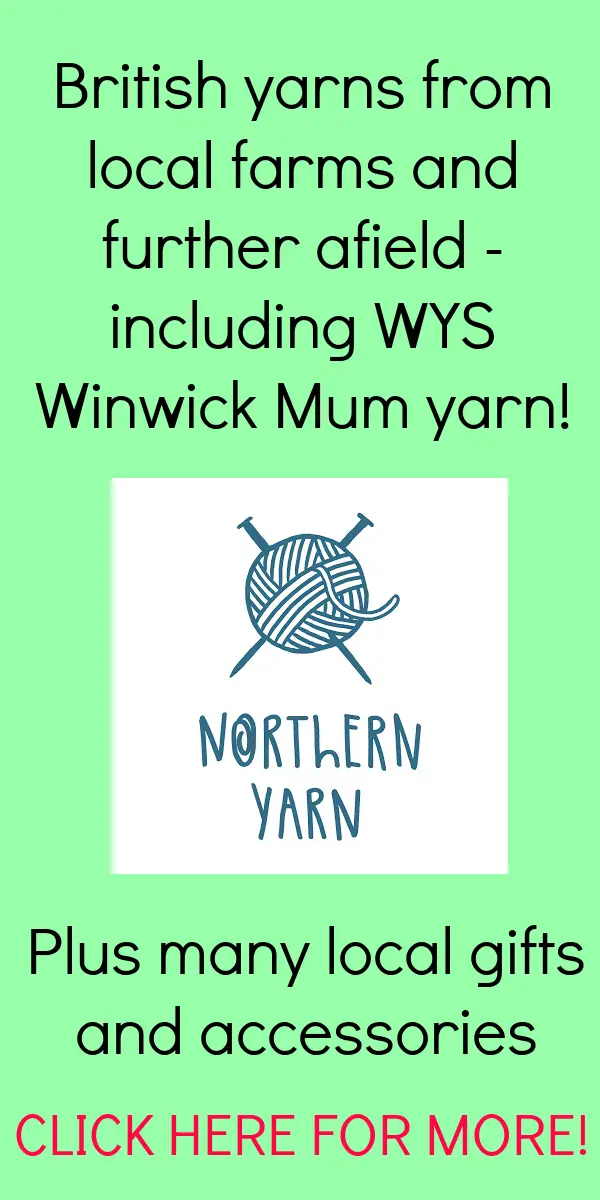

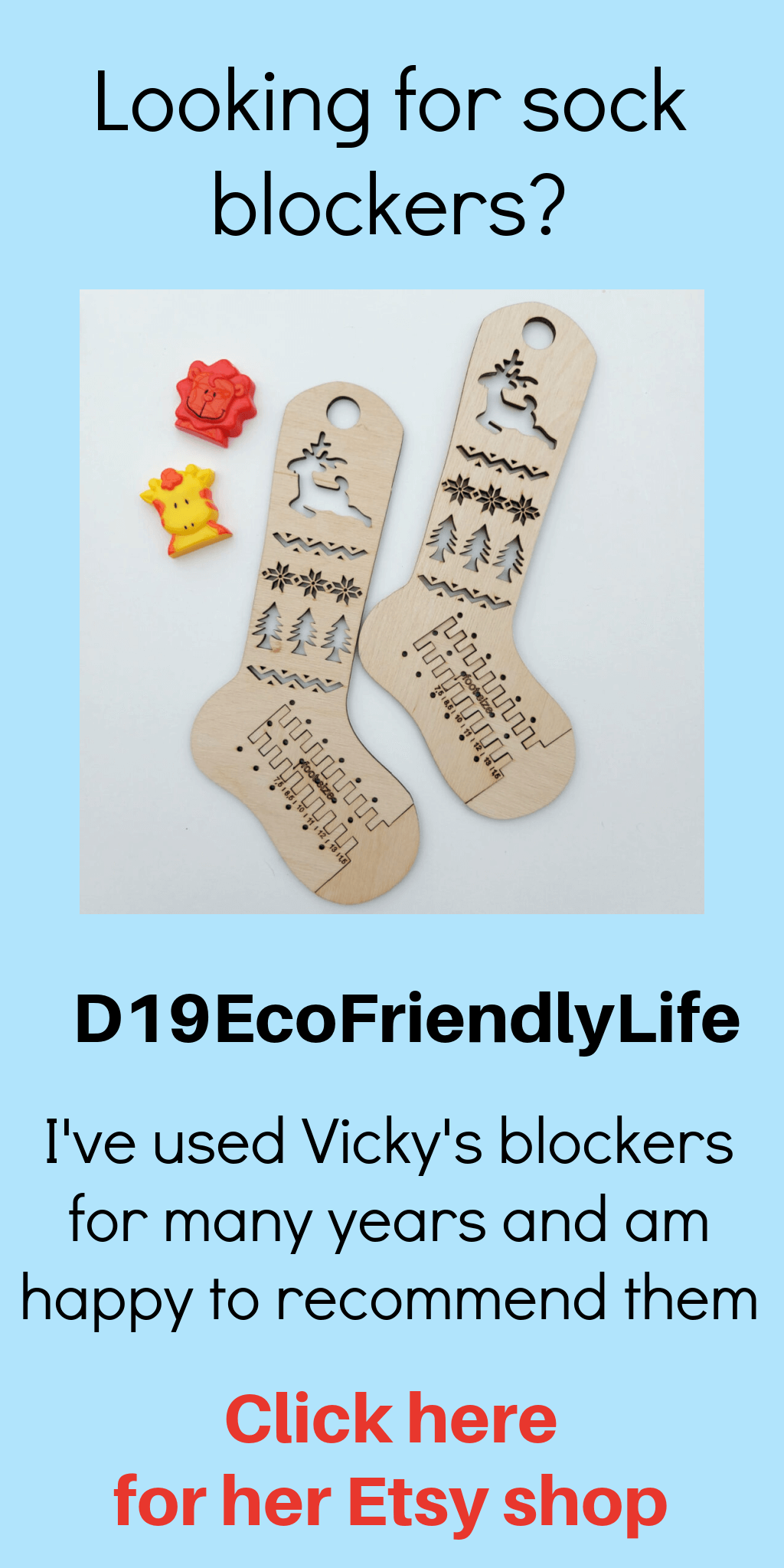

Thank you so much for posting this pattern. My next socks are sorted! xx
That'll be great, thank you! 🙂 xx
Thank you for yet another lovely pattern! I can't wait to try this one out! I too love cables!
You're very welcome 🙂 xx
thank you for the pattern. Your socks are lovely.
awesome! another pair of socks to make!
thankyou so much for sharing, you're very generous with your patterns! just lovely!
wonderful post
thanx for sharing